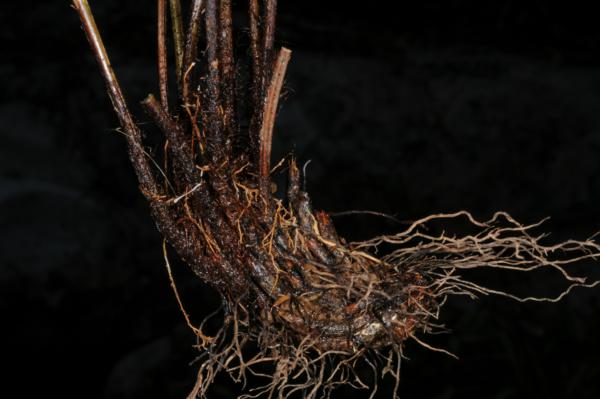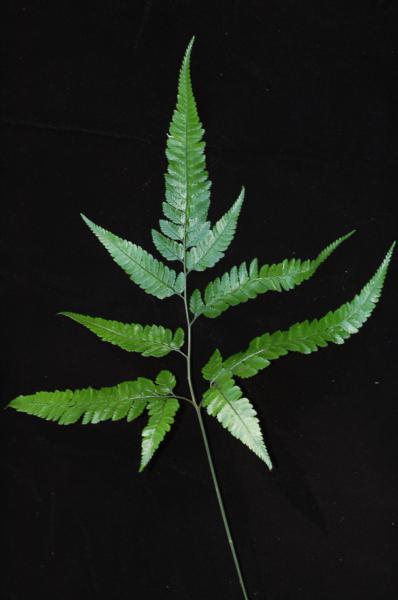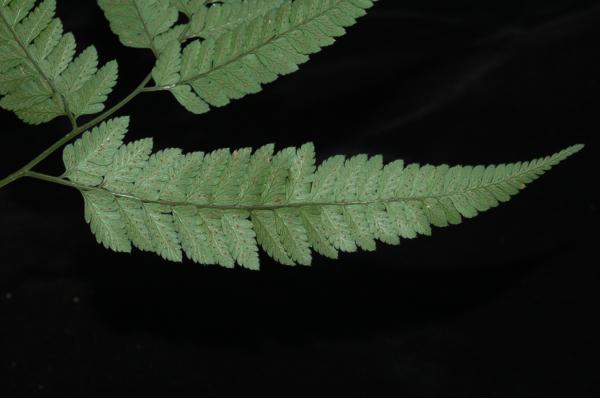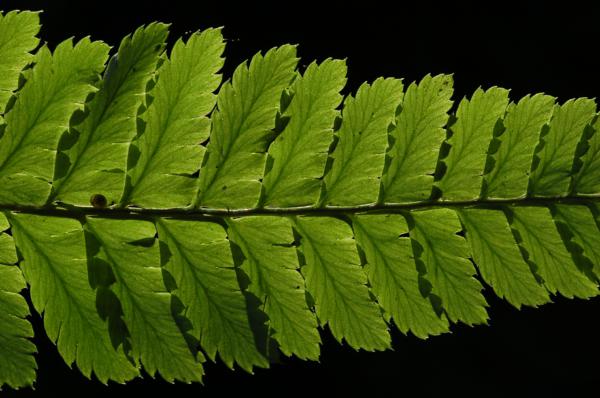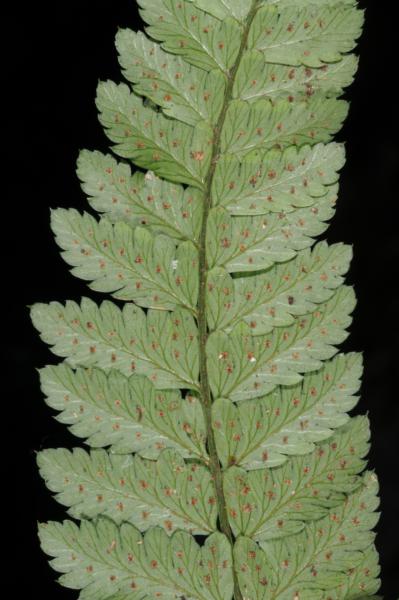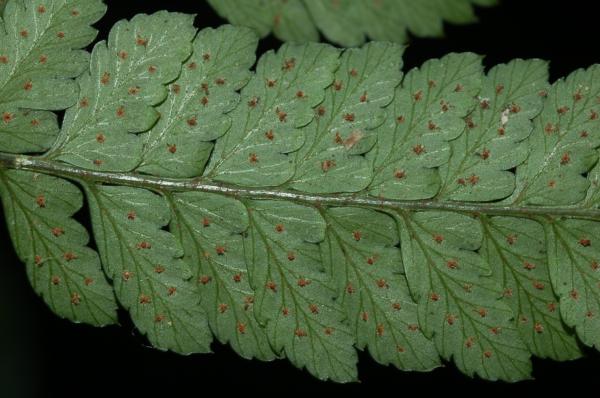
Arachniodes chinensis (Rosenst.) Ching
Family
Dryopteridaceae
Nomenclature
Arachniodes chinensis (Rosenst.) Ching, Acta Bot. Sin. 10: 257. 1962; Tagawa & K.Iwats., SouthE. Asian Stud. 5: 93. 1967; Tagawa & K.Iwats., Fl. Thailand 3: 344. 1988; Boonkerd & Pollawatn, Pterid. Thailand: 199. 2000. – Polystichum amabile (Blume) J.Sm. var. chinense Rosenst., Repert. Spec. Nov. Regni Veg. 13: 130. 1914. – Rumohra chinensis (Rosenst.) Ching, Sinensia 5: 46, pl. 3. 1934; Tardieu & C.Chr., Fl. Indo-Chine 7(2): 322. 1941. – Polystichopsis chinensis (Rosenst.) Holttum, Rev. Fl. Malaya ed. 1, 2: 486. 1955 ['1954'].
Description
Terrestrial. Rhizome short creeping, about 6 mm diam.; scales dense, dark brown, up to 8 by 2 mm or narrowerm margin entire. Stipes stramineous, up to 55 cm long, densely scaly throughout; scales on upper portion narrow, dark to black, entire. Laminae oblong with acuminate apex, up to 45 by 30 cm, tripinnate at base, bipinnate to tripinnatifid above base; rachis densely covered with fibrillose blackish scales, grooved on upper surface; lateral pinnae 7–10 pairs, basal pinnae the largest, with large basiscopic and acroscopic pinnules, middle pinnae narrowly subtriangular, straight or slightly falcate, widest at shortly stalked base, gradually narrowing towards caudate-acuminate apex, up to 20 by 5–6 cm; upper pinnae suddenly shortened to form caudate apical portion of frond; pinnules lobed to pinnatisect in larger ones, shortly stalked or sessile, subparallelogram-shaped, acute at apex, more or less auricled at anterior base, subdimidiate at posterior base, 20–30 by 0.7–1.5 mm; ultimate lobes with sharp awns at acuminate apex, entire; chartaceous, glabrous, deep green; midrib of pinnule raised on lower surface, veins pinnate. Sori terminal on veinlets, round; indusia round-reniform , naked.
Distribution in Thailand
NORTHERN: Chiang Rai; NORTH-EASTERN: Loei; SOUTH-EASTERN: Chanthaburi.
Wider Distribution
S & SW China, Indochina and Peninsular Malaysia.
Ecology
On mountain slopes in evergreen forests at medium or high altitudes.
Proposed IUCN Conservation Assessment
Least Concern (LC). This species is widespread and not under any known threats.
Voucher specimens - Thailand
Middleton et al. 4706, Chanthaburi, Khao Soi Dao Wildlife Sanctuary (E).
Rhizome
Frond
Upper lateral pinna
Venation
Lower surface of lamina with old sori
Old sori
Site hosted by the Royal Botanic Garden Edinburgh. Content managed by Stuart Lindsay, Gardens by the Bay, Singapore and David Middleton, Singapore Botanic Gardens. Last updated 24 January 2012
